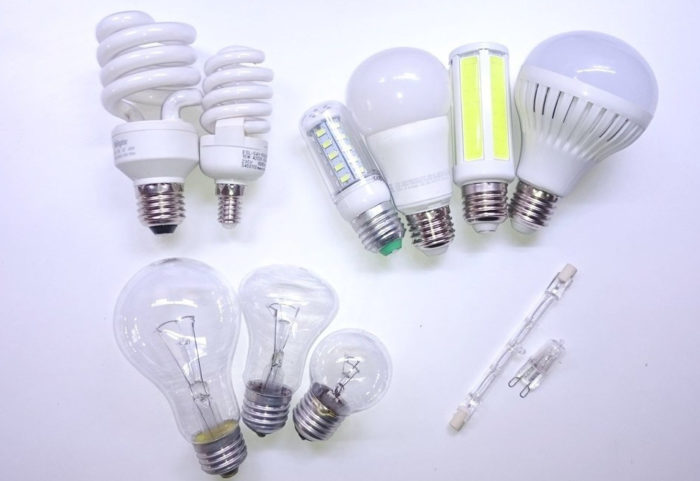What are the best light bulbs for the home
When choosing a light bulb for the home, the user may be confronted with a variety of products on the market. To choose a lamp with optimal performance, it is recommended to make a choice only after studying the features of the devices.
Characteristics and types of bulbs for the home
The most common types of lighting household devices include:
- incandescent lamps;
- fluorescent sources;
- LED lamps.
Incandescent bulbs
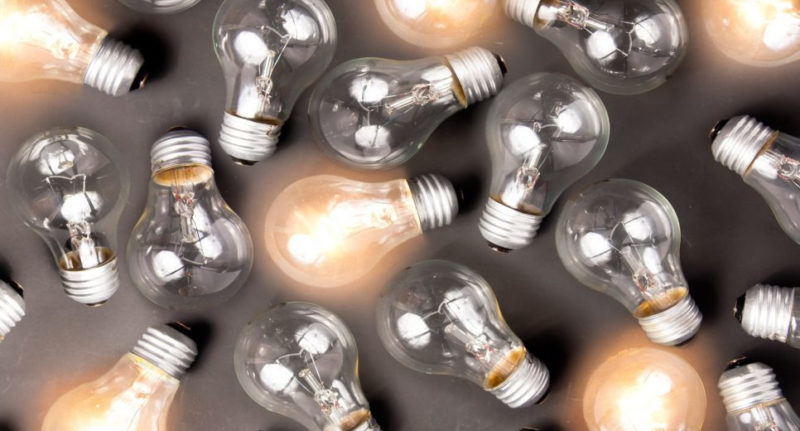
Incandescent bulbs are now gradually being replaced from the market by more advanced lighting devices. However, they remain useful in a number of cases. In particular, such a source can be placed in a common area that is visited quite infrequently.
Pros:
- Stability of illumination even with voltage fluctuations;
- lighting that is close to natural light;
- affordability;
- the design does not contain harmful components.
Cons:
- short lifespan;
- fragile construction;
- gradual decrease in the intensity of luminous flux;
- it is difficult to find models of high power.
Fluorescent elements

These are universal energy-saving lighting fixtures that can be installed in any room. The peculiarity of such equipment is high sensitivity to the number of switching on and off per day. It's best to turn the light on once and use it for a long time.
Pros:
- Long service life of at least 2,000 hours;
- higher luminous efficacy than incandescent bulbs;
- Economical power consumption.
Cons:
- Include hazardous components that can create a lot of trouble if leaked;
- with prolonged use, the intensity of light gradually decreases;
- requires ballasts to operate;
- fragility;
- high cost.
LED lamps
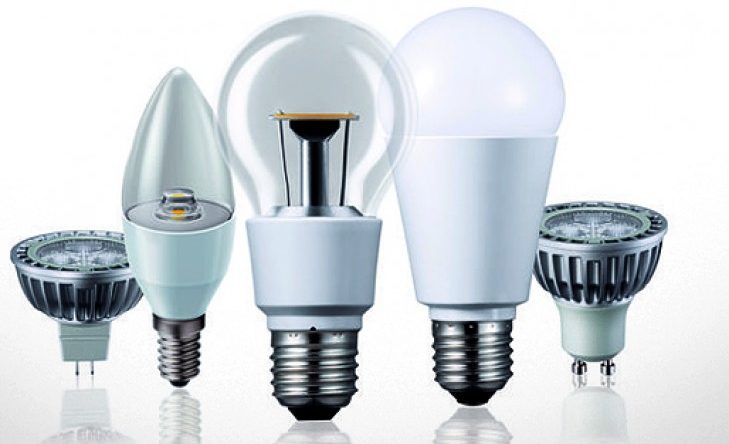
The most modern LED light sources are those that are completely devoid of the disadvantages of their predecessors. They are not suitable for the streets, but in the home they are at their best.
Advanced LED devices boast a spectrum as close to sunlight as possible. The flux created is enough for work, leisure and other activities.
Pros:
- A very high lifespan of 35,000 to 70,000 hours;
- economical power consumption;
- convenience.
Cons:
- high cost of models;
- the light is significantly different from daylight, which leads to sleep disturbance and other problems.
How to choose the right light bulb for the house
When choosing a light bulb for the home, you need to determine the type of device, the socket, choose the shape. Additionally, take into account:
- power consumption;
- level of illumination;
- safety.
For all models on the market the following is true: the more powerful the lamp, the brighter it shines. The luminous flux is measured in lumens and is indicated on the package.
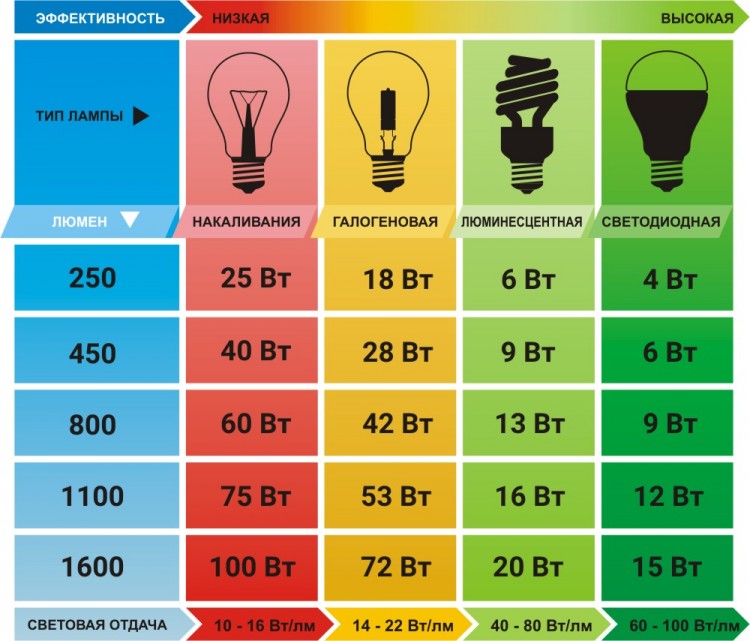
The following selection criteria by power have been formed:
- for incandescent lamps - about 18 W per 1 sq.m. area;
- fluorescent fixtures - 8 watts per 1 sq.m;
- LED elements - 3 W per 1 sq.m.
When replacing a light bulb in the house, the power of the chandelier is taken into account. Some chandeliers artificially underestimate the power supplied to the socket and simply will not be able to provide the selected elements with the right amount of energy.
The socket on household light sources is usually threaded. E14 and E27 are most commonly used. The number next to the letter means the diameter of the connection to the lamp socket.
Less commonly used are pin bases marked G. They have different sizes, it is necessary to pick up the lamp according to the specific designation.
The shape of the lamps is varied. Popular household modifications in the form of a pear, ball or candle.
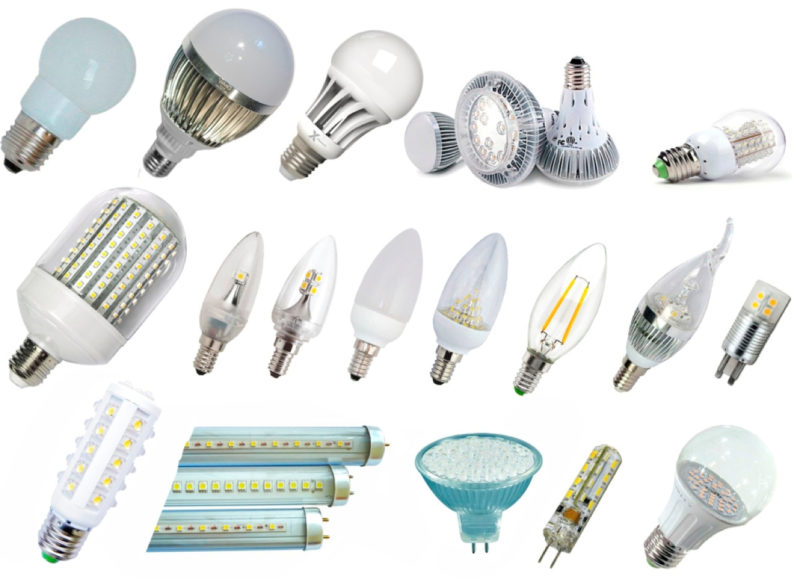
When choosing bulbs for the home, special attention should be paid to the temperature of the glow. All devices are commonly divided according to this principle into two large groups: with warm and cold light. In each group there are many shades. Now manufacturers of light bulbs are trying to indicate on the packaging the full range of temperatures and prescribe a specific value in Kelvin.
Rating of the best
For a clear comparison of the proposals on the market, let's consider what models of light bulbs are the best in different groups.
ERA C0038550 E14 B35 28W
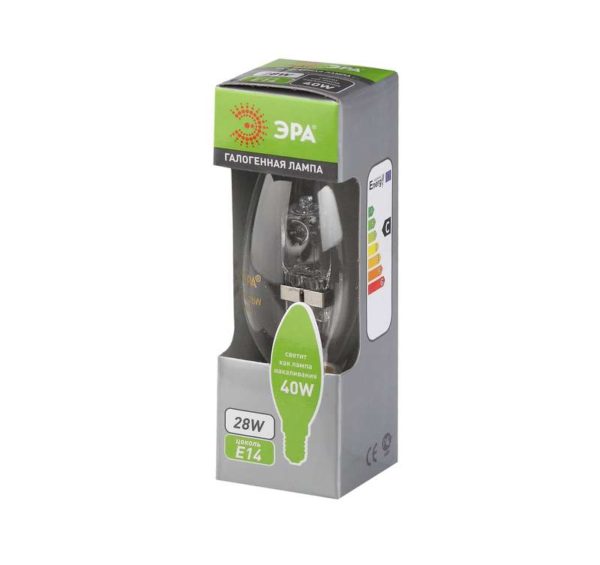
Halogen bulb from the category of incandescent devices. Can provide a high luminous flux of 392 Lm, suitable for lighting large rooms.
The candle bulb gives the model a classic look and helps combine the source with classic luminaires. The bulb is fully transparent and emits neutral light at a temperature of 3000K.
The standard E14 base allows the model to be used in common home luminaires designed for "candle". Compared to a normal incandescent bulb, the device consumes half the energy.
Camelion 10609 E27 T2 20W
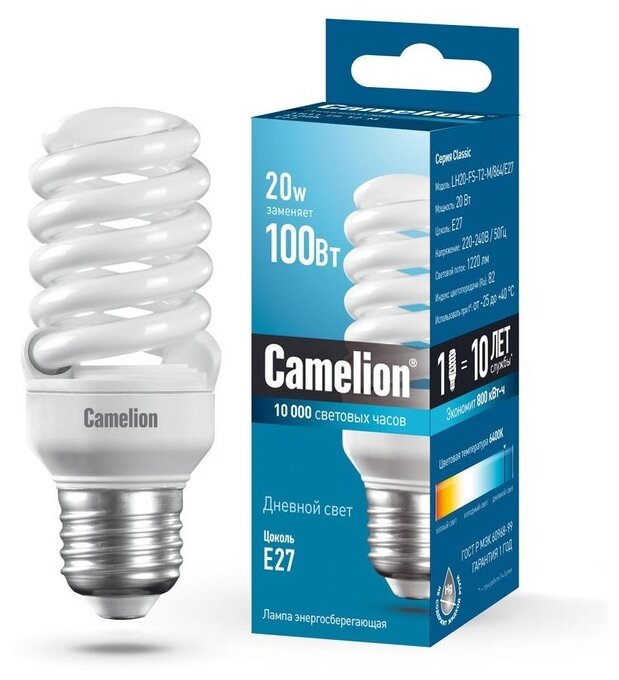
A fluorescent energy-saving lamp with a wattage of 20W. Comparable in efficiency to a 100W incandescent bulb.
The element is able to function steadily at temperatures from -25 to +40 degrees Celsius. For this reason, the lamp is suitable for use in basements or ground floors.
The device is designed to work for 10,000 hours. For connection to the network, a standard E27 base is used, the element can be installed in place of a traditional incandescent lamp.
The 1320 Lumen output is enough to effectively illuminate large residential or commercial spaces.
Gauss 102502211-D E27 A60 11 W
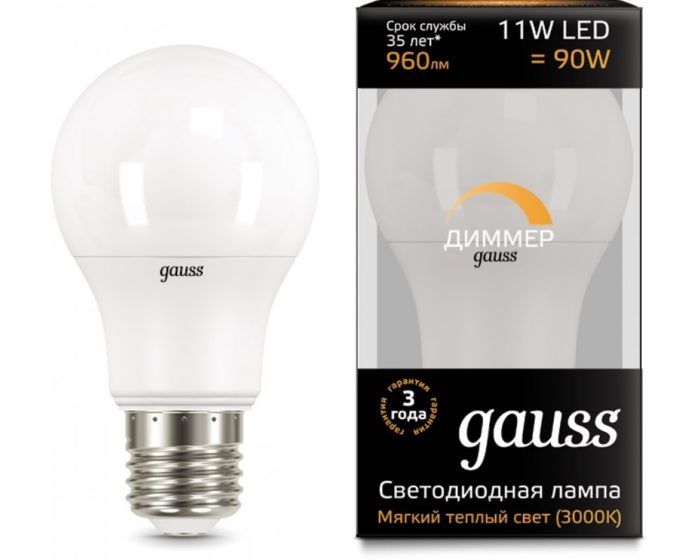
The lamp belongs to the category of LED lamps. The design allows the model to be combined with a dimmer, greatly extending the functionality of the system. The device consumes only 11 watts, while the efficiency is equivalent to 90-watt incandescent bulbs.
One such lamp can illuminate approximately 5.5 m2. This daylight white light with a temperature of 4100 K is suitable for work and leisure. Even with prolonged use irritation or eye fatigue will not occur.
To connect here is also used a classic E27 socket, compatible with old Soviet-style lights.
Service life of light bulbs
Choosing a light bulb for the house, it is important to know the resource of the products. The least durable are incandescent bulbs, designed for about 1,000 hours of operation. This is due to the degradation of the filament during operation.
How to make a light bulb burn up to 100 years and consume less electricity
Energy-saving fluorescent light bulbs have a more acceptable performance. Quality models from reputable manufacturers can operate for an average of 10,000 hours without problems. They also contain wear and tear elements (electrodes) which lose their properties over time.
The most durable are LED devices, many of which are able to function stably for 50,000 hours. However, they also gradually degrade, which is expressed in a decrease in brightness.
If the choice of light bulb for the home is driven by cost-effectiveness, the best option would be an LED device. For specific purposes, an incandescent or fluorescent bulb may be suitable.

